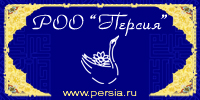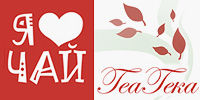Oriental Collection № 1/2012

Pakistan, a photo essay by Sergey Boyko, opens the first issue of 2012.
Elena Tolmachyova, Aleksey Krol. Tired with Tahrir. Egyptian Revolution: Look from a Museum’s Window. The group of Russian researchers was forced to close early its work in Faiyum Oasis. In their report being published here the authors draw the picture they saw in November, 2011 in the Cairo Museum where «statues surrounded earlier by the crowds of tourists humming in all the world’s languages, look now like abandoned toys of grown-up children».
Boris Riftin. Konstantin Skachkov’s Fate and Heritage. K. A. Skachkov (1821-1883) worked in the Russian Spiritual Mission in Beijing, served as a consul in different Chinese towns. And he found his place in the history of Russian sinology as a gatherer of the huge collection of Chinese books, manuscripts and maps. Now it is in the Russian State Library. The Academician Riftin’s article is dedicated to Skachkov’s collecting activities and rare items of his collection.
Olga Solomina. The Special Features of National Views on Geography. The article presents for the first time the description of the Chinese geographic maps collection from the K. A. Skachkov’s found, most interesting map items are published.
Svetlana Sysoeva. The Maternial Line of the Ngadas. The traditional village of Bena, Indonesian island of Flores, is inhabited by the people of Ngada. When visiting this village the author of the essay found very many things of interest. For example, the Bena villagers build their houses keeping in mind that there will live not only living people but also ancestors’ souls. Houses, family sanctuaries and other kinds of property are inherited by elder daughters, there is caste system here and other social institutions survived from the ancient times.
Svetlana Ryzhakova. Dancers in Assam. In the state of Assam, North-East India, there is an original dancing style sattriya that absorbed many local traditions. This is an ancient, continuously existing temple dance connected with the local form of Sanskrit drama. The role of temples is played by the sattras, original social institutions simultaneously resembling both the ashrams and the villages.
Maksim Mikhalyov. The Secret Shamanism. Extracts from the travel diary of the article’s author, who is the ethnologist studying the beliefs of Chinese minorities, with author’s scientific commentary. The Shamanism still exists in China but is not advertised, he affirms, and shaman is not a public person though he plays a considerable social role.
Natalya Golubinskaya. The Musical History. Nikolay the Japanese (Ivan Kasatkin) was the founder of the Russian Orthodox Church in Japan. The Father Nikolay’s multi-volume diary published in Russia contains much valuable for the scholars, including the rich material on Japanese musical culture of late 19th century and on the way the European, and the Russian also, music penetrated into the life of this country. The article is illustrated with the unique photos of late 19th century.
Dmitry Frolov. «And the Stars Everywhere Are the Same...» The article’s author shows with some examples the Oriental influence in the creations of Osip Mandelstam. The image of Orient, like other Mandelstam’s ones, is very intricate and versatile. First, the Muslim East is interlaced by a strange way with the Judaic one, and this creates unusual comparisons and correlations. Second, in some cases the Muslim context «replaces» an earlier one — Christian or antique.
Viktor Solkin. The True Name of Taiah. In Maksimilian Voloshin’s House, Koktebel, the visitors’ attention is always attached the sculptural portrait of an Ancient Egyptian queen whom the poet called «Taiah». This image reflected in the poet’s work became a part of the «Silver Age» history. In reality by the name of Taiah is hidden a half-forgotten personality, a powerful Egyptian sovereign — this is Mutnejmet, the wife of last pharaoh of the 18th dynasty Horemheb.
Haruhi Funakawa. Artist and Diplomat. Studying the archive of his grandfather, the diplomat Tomomaro Gunji who worked in Russia longtime, the article’s author found two old photos. From the scriptures on their backsides was clear that these are the images of the artist Ilya Repin. Haruki Funakawa, scientific worker, Eurasian Countries Institute, Tokyo, presents to the magazine’s readers the story of the Japanese diplomat’s meeting with the famous Russian artist and his daughter Vera.
Galina Mironova. Behind the Pages of the Siwa Manuscript. The oasis of Siwa, which is in the western part of Egypt, near the Lybian border, is an unusual place. The people here speaks a special dialect of Berber language and are proud of the Siwa manuscript, where is written the history of this area, of historical sights, and they keep to their ancient wedding customs and rites and celebrate their own festivals.
Aleksandr Meshcheryakov. The Japanese Nature in the Eyes of a Standard Japanese. The book of Shiga Shigetaka published in 1894 immediately became a bestseller and its author was called a real, standard Japanese. One of his reviewers affirmed that Shiga praised the essence of Japan that consists of «its interrupted by the ages imperial dynasty and unprecedented all around the world beauty of its nature». As specific features of Japanese geography and nature the author mentions the climate variety and the large number of sea currents, the high humidity, the multitude of volcanoes, and the rough rivers with rapids as well.
Nikolay Listopadov. Thousand and One Years of the Great Temple. The Great Temple complex in South Indian city of Tanjavur is a real architecture, sculpture and paintings museum. The Great Temple is dedicated to the God Shiva as the cosmic dance lord Nataraja, and because of this it is not accidentally that for the temple’s 1000th anniversary celebrations precisely the thousand dancers were invited.
Our «Orientnet» section presents web resources on the «Snakes in the Oriental Culture» theme.
In this issue we publish also the remarks on the Russian and Chinese Popular Print exhibition, and on the Turkmen Manual presentation in Oriental Centre, Russian State Library, and other materials too.






